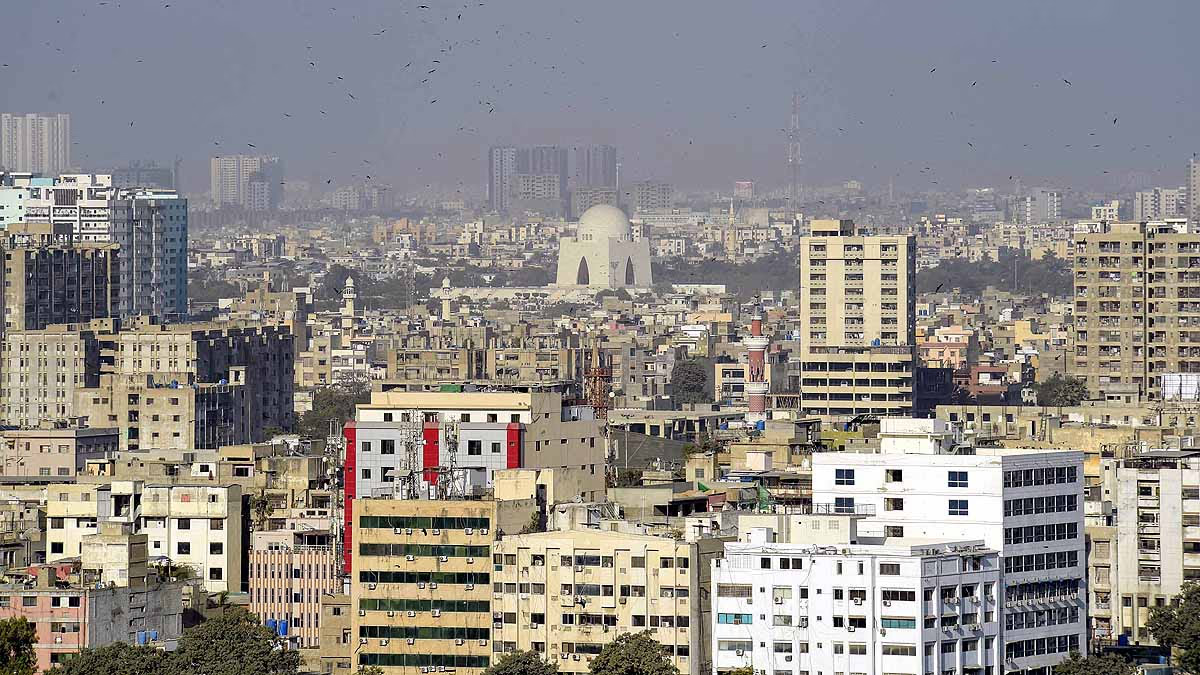Pakistan's largest city, Karachi, is shuddering from earthquake jolts. On June 2, 2025, a total of three earthquakes rocked the city within 24 hours. Over 48 hours, there were 21 recorded earthquakes ranging from 2.1 to 3.6 in magnitude. These tremors have instilled fear and questions in the populace: Why are earthquakes repeatedly striking Karachi? Is there significant movement beneath the crust?
Recent Earthquakes in Karachi
June 2, 2025:
A tremor of 3.2 magnitude hit early morning in Karachi's Qayyadabad. Prior on Sunday (June 1), a shock of 3.6 magnitude was felt at 5:33 PM, affecting areas like Khokhrapar, Malir, Landhi, Future More, Gul Ahmed, and Hospital Chowrangi.
21 Earthquakes Over 48 Hours:
Between June 1 and 2, 2025, Karachi experienced 21 tremors ranging from 2.1 to 3.6 in magnitude. The largest tremor at 3.6 magnitude caused a section of Malir Jail's wall to collapse, resulting in the escape of 216 inmates.

Source: aajtak
Past Records
February 2025 saw 20 minor earthquakes in Karachi (averaging one jolt daily). In May 2025, seven earthquakes were recorded within 4.2 to 4.9 magnitudes. In April 2024, an earthquake of 3.2 magnitude struck near Malir, with the epicenter at a depth of 12 km. So far, these earthquakes haven't caused significant damage or loss, but the Malir Jail incident has heightened concerns.
What Causes Earthquakes?
Earthquakes occur due to movements within the Earth's crust (tectonic plates). The outermost layer of the Earth, the lithosphere, is divided into several large chunks known as tectonic plates. These plates drift slowly due to the heat from the Earth's core and the partially molten asthenosphere beneath.
Fault Lines: When tectonic plates collide, slide past, or move apart, faults or cracks occur. Stress accumulates along these fractures, and when released suddenly, an earthquake occurs.
Seismic Waves: The energy from an earthquake spreads as P-waves (fast, compressive) and S-waves (slower, lateral shaking), causing the ground to tremble.
Magnitude and Intensity
Magnitude:
An earthquake's energy is gauged on the Richter scale or the moment magnitude scale. Quakes with less than 3 magnitudes are minor, 4-6 are moderate, and anything over 7 is considered major.
Intensity:
Measured on the Mercalli scale, it indicates the effect of an earthquake (damage, shaking intensity).

Source: aajtak
Causes of Earthquakes in Karachi
The frequent earthquakes in Karachi stem from natural and man-made activities. Understand the primary causes...
1. Movement of Tectonic Plates
Pakistan lies at the junction of three major tectonic plates—Arabian, Eurasian, and Indian—making it a seismically hazardous region.
Landhi Fault Line:
The Landhi Fault in Karachi has become active after a century of dormancy, causing minor earthquakes.
Karachi's Location:
Situated alongside the Arabian Sea, where the Arabian plate is subducting beneath the Eurasian plate, this geologic activity triggers earthquakes.
Benefit of Minor Earthquakes:
Experts suggest that small quakes gradually release tectonic stress, potentially reducing the threat of a major earthquake.
2. Groundwater and Construction
Human activities might also be accountable for Karachi's tremors...
Groundwater Depletion:
Illegal groundwater extraction and construction on riverbeds have weakened the soil, possibly triggering minor earthquakes.
Poor Construction:
Numerous buildings in Karachi lack earthquake-resistant designs. A 3.6 magnitude quake brought down Malir Jail's wall, demonstrating poor construction practices.
Soft Soil:
Areas like Malir and Korangi have soft soil, amplifying seismic waves.

Source: aajtak
3. Other Potential Causes
Induced Seismicity:
Activities like mining, oil-gas extraction, or reservoir creation can trigger earthquakes. Karachi's oil and gas activities need investigation.
Climate Change:
Some studies suggest climate change affects groundwater levels and soil stability, potentially promoting earthquakes. However, this is yet to be confirmed for Karachi.
Is there a Risk of Major Earthquakes?
Pakistan Meteorological Department (PMD): PMD's DG Mehar Sahibjad Khan indicates these minor quakes might persist for 2-3 days but assures the situation will improve. Karachi need not worry, he says.
Ameer Haider Laghari (Weather Expert): Laghari warns the minor fault lines in Korangi and Malir are active and urges the government to alert residents.
Independent Experts: Some geologists fear minor quakes could signal a major impending earthquake.
International Monitoring: The USGS and India's NCS detected no seismic activities in Karachi since June 1, casting doubt on the local monitoring system's effectiveness.

Source: aajtak
Seismic History of Pakistan
Pakistan has experienced significant earthquakes due to its location around the Ring of Fire and the Alpine Belt, stretching from the Himalayas to Europe. The 2005 Muzaffarabad earthquake (7.6 magnitude) is a reminder. While major quakes are unrecorded in Karachi, its tectonic position remains a risk.
Subsurface Movements
Below Karachi, the Earth's layers consist of the lithosphere (20-100 km thick) and the asthenosphere beneath.
Landhi Fault:
This could be a strike-slip fault, where plates slide laterally.
Subduction:
The Arabian plate subducts beneath the Eurasian plate, creating tension.
Soft Soil Effect:
Karachi's coastal areas' soft soil and groundwater shortage amplify seismic waves.
Depth:
Recent quakes occurred at 5-12 km deep, classified as shallow and characterized by strong shaking.
Impact and Risks
Social Impact: Fear of earthquakes is prompting rumors on social media. The Malir Jail episode has raised security concerns.
Economic Loss: Though minor quakes have not caused significant damage yet, poorly constructed buildings remain at risk.
Natural Disasters: According to IDMC's 2025 report, 32 million people were displaced by floods and storms in India and South Asia between 2015-2024. Earthquakes could amplify this risk.

Source: aajtak
Solutions and Recommendations
Enhanced Monitoring:
Increasing seismic stations in Karachi is crucial. The absence of USGS and NCS highlights local system deficiencies.
Earthquake-Resistant Construction:
New buildings should comply with earthquake-resilient codes. Retrofitting older structures is essential.
Groundwater Management:
Illegal extraction should cease, maintaining groundwater levels.
Awareness:
Residents should be equipped with earthquake safety kits, emergency plans, and accurate information.
The frequent earthquakes in Karachi are a result of the Landhi Fault activation, Arabian-Eurasian plate movements, soft soil, and human-induced activities such as groundwater depletion. While small quakes release tension, the risk of a larger quake persists. Enhanced monitoring, earthquake-resistant constructions, and public awareness are paramount for safeguarding Karachi.




